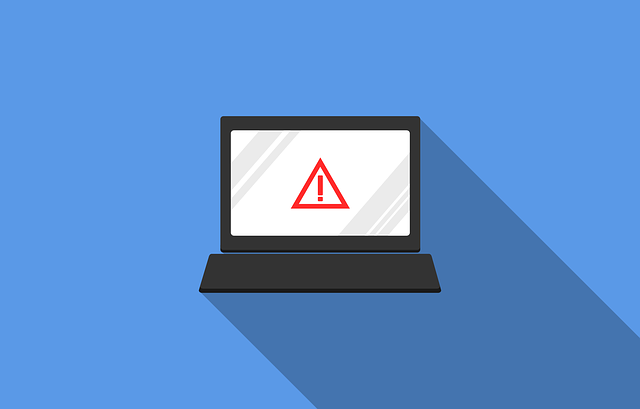A Security Operations Center (SOC) is a centralized unit responsible for monitoring, detecting, analyzing, and responding to security incidents within an organization’s IT infrastructure. The primary objective of a SOC is to safeguard the confidentiality, integrity, and availability of an organization’s critical data.
In today’s digital age, cyber-attacks have become increasingly sophisticated and frequent, posing a significant threat to organizations of all sizes. This is why it is essential for businesses to have a well-designed SOC in place to help prevent, detect, and respond to security breaches. Without a SOC, an organization’s IT infrastructure is vulnerable to attacks, which can result in data loss, financial loss, and reputational damage for many organizations
.

A SOC has several critical functions, including continuous monitoring log management and analysis of network traffic to detect suspicious behavior and anomalies that may indicate a security breach. The SOC team is also responsible for identifying and responding to security threats quickly and efficiently before they can cause significant damage to an organization’s IT systems. Additionally, a well-designed SOC plays a vital role in maintaining and updating security systems, ensuring that they are up-to-date with the latest security patches and configurations.

By having a SOC in place, businesses can benefit from 24/7 protection against cyber-attacks, providing peace of mind that their critical information remains secure. Moreover, a SOC provides valuable insights into an organization’s security posture and threat intelligence, helping businesses to identify potential vulnerabilities and implement proactive measures to prevent future attacks.
In conclusion, having a SOC is essential for businesses to protect against cyber threats and ensure the security of critical data. With its monitoring, analysis, and response capabilities and automated tools, a SOC can help organizations to detect and prevent security incidents before they cause significant damage. Therefore, investing in a well-designed SOC is critical for any organization looking to safeguard its IT infrastructure and protect its reputation.
Why is a SOC Important?
A Security Operations Center (SOC) is a critical component of an organization’s security posture. It provides monitoring and response capabilities that are essential for detecting, analyzing, and responding to potential threats in real-time. By having a centralized team that focuses on security incidents, organizations can quickly identify suspicious activity or act on emerging threats before they become more serious.
Additionally, with the right tools and processes in place, SOCs are able to detect malicious activity that would otherwise go undetected. A strong Security Operations Center is essential for any organization looking to protect its assets and minimize risk.
SOCs are also important because they provide visibility into an organization’s security posture. By tracking security incidents on a regular basis, a SOC can help identify gaps and weaknesses in an organization’s security measures. Additionally, they can provide valuable insights into emerging threats that may be beyond the scope of existing countermeasures.
Finally, having a well-defined and established SOC allows organizations to respond quickly and efficiently when there is a potential breach. With proper processes in place, the SOC can quickly assess a threat and devise a plan for responding to it. This helps organizations maintain their security posture by taking proactive steps to prevent future incidents.
Ultimately, an organization’s security posture is only as strong as its Security Operations Center. By creating an effective team with the right processes and tools, organizations can achieve an
Benefits of Outsourcing SOC Security
Outsourcing SOC security offers numerous benefits for businesses, including continuous cybersecurity monitoring, more endpoint detection, faster response times, and reduced workload for the IT team. By partnering with a trusted security provider, organizations can rest assured that their critical IT infrastructure is being monitored around the clock for potential cybersecurity threats.

One of the primary benefits of outsourcing SOC security is the assurance of continuous cybersecurity monitoring. A dedicated team of cybersecurity experts can monitor an organization’s network and IT systems constantly, detecting any suspicious behavior or anomalies that may indicate a security breach. This real-time security monitoring also allows for a faster response to any security incidents, reducing the risk of significant damage to the organization’s IT systems and critical data.
Additionally, outsourcing SOC security allows businesses to focus on their core competencies. By the information security operations center entrusting the security aspects to a security provider, the IT team can focus on other critical tasks that are essential to the organization’s success. This improved efficiency can result in increased productivity, allowing the organization to achieve its goals more effectively.
Furthermore, outsourcing SOC security can reduce the workload for the IT team. A dedicated security provider can handle the heavy lifting of managing and maintaining the security systems, including updating with the latest security patches and configurations. This allows the IT team to focus on other critical tasks and responsibilities.
In conclusion, outsourcing SOC security offers numerous benefits for businesses, including continuous cybersecurity monitoring, faster incident response times, and reduced workload for the IT team. Partnering with a trusted security provider allows organizations to focus on their core competencies while ensuring the security of their critical IT infrastructure.

Key Factors to Consider When Choosing a SOC Provider
When evaluating different SOC providers, it’s essential to consider several key factors to ensure comprehensive cybersecurity. Here are some of the critical factors to consider:
1. Level of Threat Detection and Prevention:
This is the most crucial factor to consider when choosing a SOC provider. The provider should have a robust threat detection and prevention system that can identify and mitigate security threats promptly. The SOC provider should also have a team of skilled cybersecurity experts who can handle any security incidents or advanced threats that occur.
2. Automation:
Automation is another crucial factor to consider when choosing a SOC provider. The provider should have automated systems that can detect and respond to security threats in real time. Automation helps security analysts to reduce response time and minimize the risk of significant damage to the organization’s IT systems.
3. Security Information and Event Management (SIEM) Tools:
SIEM tools are essential for effective threat detection and intrusion prevention systems. The SOC provider should have advanced SIEM tools that can analyze security events and identify potential threats. These tools can also help to detect patterns of suspicious behavior and prevent cyber attacks before they occur.
4. Compliance Standards:
Compliance standards are critical for any organization that handles sensitive data. The SOC provider should comply with industry-recognized security standards such as HIPAA, PCI-DSS, and GDPR. Compliance with these standards ensures that the organization’s critical data is secure and protected from unauthorized access.

Each of these factors contributes to comprehensive cybersecurity and should be considered when evaluating different SOC providers. A provider that meets all of these factors will offer a high level of security and minimize the risk of security incidents. When choosing a SOC provider, it’s essential to conduct thorough research on security tools and select a provider that meets all of your organization’s cybersecurity needs.
Real-life Situations Where Managed SOC Has Made a Difference
Managed SOC services have proven to be essential in preventing serious security alerts and breaches, saving companies money, and minimizing the impact on organizations. The following are some real-life scenarios where a reputable security provider with a managed SOC has made a difference:
1. Healthcare Industry:
According to a report by IBM, the healthcare industry has the highest cost of data breaches, with an average of $7.13 million per breach. One healthcare organization that adopted a managed SOC solution from a reputable provider was able to prevent a data breach that could have cost them millions of dollars. The SOC provider detected suspicious activity on the network and immediately notified the healthcare organization’s IT team, who promptly took action and prevented the attack.
2. Financial Services Industry:
A financial services company that had suffered a data breach in the past adopted a managed SOC solution from a reputable provider. The provider a security analyst was able to detect a potential attack on the network and notified the company’s IT team. The team was able to take action quickly and prevent the attack, saving the company an estimated $1.5 million in damages.
3. Retail Industry:
A retail company that had suffered a data breach in the past adopted a managed SOC solution from a reputable provider. The provider was able to detect and block a phishing attack that could have potentially compromised the company’s customer data. The retail company estimated that the managed SOC solution saved them $2.5 million in damages and prevented a loss of customer trust.

Outsourcing SOC and security operations to a reputable provider with a managed SOC solution can provide comprehensive protection for companies’ digital assets. The provider can detect and respond to potential threats in real time, reducing response time and minimizing the risk of significant damage to the organization’s IT systems.
This approach reduces costs associated with downtime, data breaches, and regulatory fines. Additionally, the provider can ensure compliance with industry-recognized security standards, protecting critical data from unauthorized access.
Conclusion
In conclusion, having a managed SOC from a reputable security provider is crucial for companies that handle sensitive data. It can prevent security breaches, save companies money, and minimize the impact on the organizations.
Companies that outsource SOC to security professionals can benefit from a comprehensive digital asset protection solution that meets all their cybersecurity needs.
Outsourcing SOC security is a smart move for businesses looking to protect their digital assets. By outsourcing SOC security, businesses can enjoy the benefits of comprehensive cybersecurity monitoring, faster response times, and reduced workload for their IT team.
When choosing a SOC provider, businesses should consider key factors such as the level of advanced threat detection tools and prevention, automation, SIEM tools, and compliance standards. With a managed SOC service from a reputable security provider, businesses can rest assured that their digital assets are well-protected against cyber-attacks.
Why Cybriant for SOC Security?
At Cybriant, we provide comprehensive SOC security for businesses of all sizes. Our team of experienced security experts can develop customized solutions to meet your specific needs. We use state-of-the-art technologies and real-time monitoring to detect and respond to any potential threats quickly.
Additionally, our solutions are fully compliant with industry standards such as HIPAA, PCI DSS, ISO 27001/2, NIST 800-53, and GDPR. With Cybriant’s SOC security services, you can rest assured that your digital assets are secure from cyber threats.
We offer enterprise-level managed services including Managed SIEM, Managed Detection and Remediation, Vulnerability Management, and CybriantXDR. Our services can help provide visibility into affected systems and further investigations to pinpoint the source of an attack.
With Cybriant’s SOC security solutions, you can stay one step ahead of cyber attackers and protect your business from costly data breaches.
SOC Monitoring Checklist for Mobile Security
Creating and maintaining a secure environment for your mobile users is paramount to any business. A good place to start is with an effective security operations center (SOC) monitoring checklist. This document outlines the necessary steps for creating and maintaining a successful SOC, including key components such as:
• Establishing proper access control measures, such as authentication, authorization, and privileges.
• Deploying a comprehensive security monitoring system that utilizes both network- and host-based detection technologies.
• Implementing preventive measures to reduce the risk of malicious activity, such as patch management, application whitelisting, IDS/IPS solutions, anti-malware systems, and more.
• Designating personnel responsible for monitoring and responding to security incidents.
• Establishing an incident response plan that details the correct procedures for addressing potential threats.
• Testing and validating your SOC monitoring checklist regularly to ensure it is up-to-date with industry best practices.
• Coordinating with stakeholders and key personnel to ensure they understand the value of security operations center, and to gain buy-in from those who need to be involved in ensuring its success.
By following these steps, you can create a strong SOC monitoring checklist that will help protect your mobile environment from potential threats.



